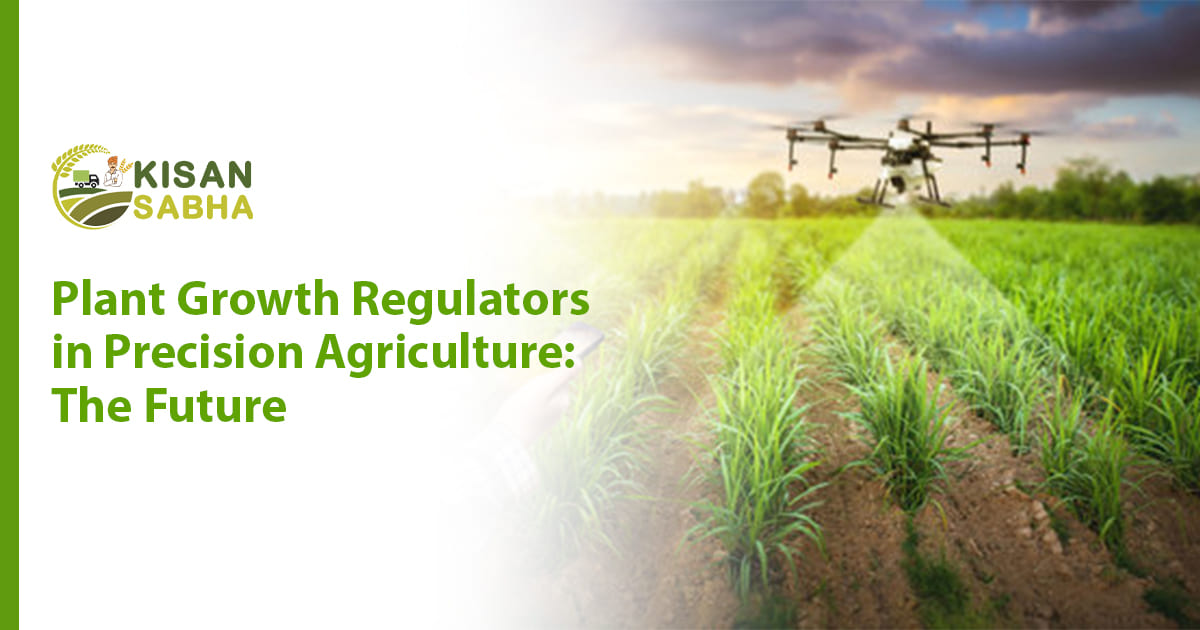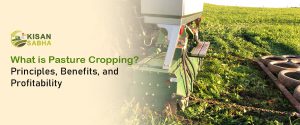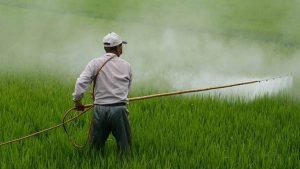Our world’s population continues to rise alarmingly, with no indications of abating. According to the United Nations, the world’s population will reach 9.7 billion by 2050. Food demand has increased in tandem with the world’s population growth. Traditional agriculture alone will not suffice to meet rising demand. Precision farming, also known as information-based agricultural production system management, is a modern and innovative farming practice that uses several scientific approaches and advanced instruments to raise yield, improve soil quality, minimize labour costs, boost productivity, and assure food security.
It employs real-time data regarding crop conditions, soil and water quality, and other vital information like weather forecasts, labour costs, and equipment availability to tackle serious economic and environmental issues. Plant growth regulators (PGRs) are an important component of precision agriculture since they regulate crop development and help optimize harvest. Plant growth regulators (PGRs) sometimes known as “plant hormones,” are chemical compounds that, when given at low doses, can encourage, hinder, or change plant growth.
Since then, they have greatly benefited farmers by enhancing plant growth and production, improving crop quality, and giving a more sustainable crop management alternative. Plant growth regulators are classified into several types. Plant growth stimulants and plant growth inhibitors are both present. Auxins, gibberellins, and cytokinins comprise the first category, whereas abscisic acid and ethylene comprise the second.
Types of Plant Growth Regulators
Auxins
Auxin is a key regulator of cell growth, plant elongation, root formation, and fruit and flower development.
Gibberellins
Gibberellins can disrupt seed dormancy, delay senescence, promote bolting, cause stem elongation, and cause early seed production.
Cytokinins
Cytokinins stimulate cell division in plants’ root and shoot systems and delay leaf senescence.Abscisic acid is a kind of acid. Abscisic acid reduces plant development and increases the likelihood of drought survival. It also tells the stomata to close, retaining water and preventing seed germination.
Ethylene
Ethylene is regarded as a multifunctional plant growth hormone since it governs both plant development and senescence. It is also used to hasten the ripening of fruits.
Also Read:- What Is Regenerative Agriculture And What Are Its Benefits?
PGRs and Precision Agriculture
The use of plant growth regulators in crop production can greatly benefit precision agriculture. Let’s look at the benefits.
Boost plant growth and yield.PGRs stimulate plant development by enhancing metabolic enzyme activity and nutrient uptake by roots. They also boost photosynthesis to promote rapid development. Farmers can employ PGRs to increase crop quality and quantity.
Improve Fruit Quality
PGRs can significantly improve fruit size, colour, taste, and quality. While abscisic acid can improve the colour and smell of the fruit, gibberellins can increase its size. Plant growth regulators can be used by farmers to produce fruits that are not only larger and more appealing to consumers but also taste better.
Give a Viable Agricultural Alternative
Plant growth regulators (PGRs) lower the demand for synthetic agrochemicals, fertilizers, pesticides, and water, allowing farmers to employ environmentally friendly agricultural practices such as precision farming. It also allows crops to grow more effectively with less water.
Reduce the Negative Effects of Environmental Stress
Plant growth inhibitors, such as abscisic acid, can aid in drought survival by closing stomata and retaining water. Farmers can grow drought-resistant crops and reduce crop failure by using PGRs.
Improve Post-Harvest Quality and Shelf Life
PGRs, like ethylene, can control the ripening process. Farmers can use PGRs to delay or accelerate the ripening process, allowing them to harvest crops at the optimal time and extend their shelf life.
PGRs’ Potential in Precision Agriculture
Plant growth regulators (PGRs) have been used in agriculture for a long time to control plant growth and development. PGRs are becoming more and more popular in precision agriculture, which seeks to boost crop yields and cut input costs by applying inputs precisely and strategically. Precision agriculture is being widely used nowadays because of PGRs.The efficiency and efficacy of PGR applications are the key objectives of current PGR technology research and development. To enhance the absorption of PGR inputs, researchers are now developing novel formulations and delivery systems.
For instance, nanotechnology-based formulations and delivery techniques can improve the stability and bioavailability of PGRs and enable targeted distribution to specific plant tissues. Similarly, biostimulant-based PGR technology research has produced encouraging outcomes. Biostimulants are organic compounds or microorganisms that help plants grow and develop, improve nutrient absorption, boost nutrient uptake effectiveness, etc. They have shown to be quite successful in raising agricultural output, improving plant quality, and reducing the need for synthetic fertilizers.
Conclusion
Precision agriculture may launch a new age of sustainable farming. PGRs can be very helpful in increasing crop yields, reducing agricultural waste, reducing crop failure, and enhancing environmental stress responses. As a result, farming may become more sustainable and help farmers lessen the impact of climate change on their crops. A big step towards making Indian agriculture profitable and sustainable would be accepting the use of PGRs in precision agriculture.





